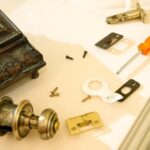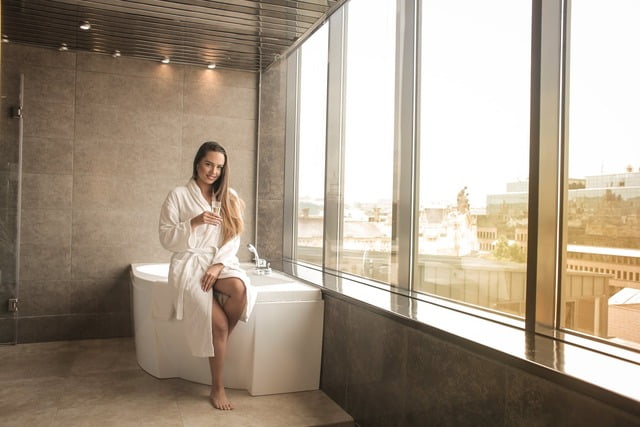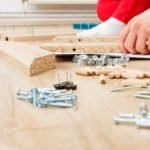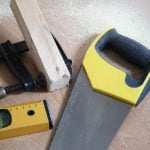Is your older home equipped with a gas heating system that is less than efficient? If so, you may be wondering how to improve gas heating in older homes.
It’s no secret that older homes often present unique challenges when it comes to heating, but rest assured, there are solutions to improve the efficiency of your gas heating system. In this article, we will discuss the specific challenges of gas heating in older homes and provide practical advice on how to upgrade and optimize your heating system for improved comfort and energy savings.
Older homes come with their own set of challenges, especially when it comes to maintaining an optimal indoor temperature during the colder months. The first step in addressing these challenges is understanding the factors that contribute to inefficient gas heating systems in older homes. From outdated furnaces to poor insulation, there are several issues that can hinder the performance of your gas heating system.
Assessing the current state of your heating system is key to identifying areas for improvement. Upgrading to a high-efficiency gas furnace, inspecting and sealing air leaks, enhancing insulation, implementing zone heating, and regular maintenance are just some of the strategies that can help improve the effectiveness of your gas heating system. By taking a comprehensive approach to addressing these challenges, you can create a comfortable and energy-efficient environment within your older home.
Assessing the Current Heating System
When it comes to improving gas heating in older homes, the first step is to assess the current heating system. This is important in order to determine the areas that need improvement and to understand the capacity and condition of the existing system. Here are some key factors to consider when assessing the current heating system:
1. Age and efficiency of the existing furnace: It’s important to determine how old the current gas furnace is and whether it is an efficient model. Older furnaces tend to be less efficient and may not provide optimal heating for the home.
2. Size of the heating system: Assessing whether the current furnace is appropriately sized for the home is crucial. An oversized or undersized furnace can lead to inefficiency and uneven heating throughout the house.
3. Condition of ductwork: Inspect the condition of the ductwork to ensure that there are no leaks or blockages that could hinder proper air flow.
Once a thorough assessment of the current heating system has been completed, homeowners can then make informed decisions on how best to improve their gas heating in older homes.
Overall, understanding these key aspects of the current heating system will provide insight into where upgrades or improvements are needed in order to create a more comfortable, energy-efficient, and cost-effective heating environment for older homes. By taking these steps, homeowners can significantly improve their gas heating in older homes while minimizing energy expenses and maximizing comfort during cold weather.
Inspecting and Sealing Air Leaks
Identifying Air Leaks
The first step in improving gas heating in older homes is to identify and seal air leaks. Common areas for air leaks include windows, doors, electrical outlets, and plumbing penetrations. An easy way to check for air leaks is to use a smoke pencil or hold a lit candle near potential leak points on a windy day. If the smoke or flame wavers, it is an indication of an air leak.
Sealing Air Leaks
Once air leaks have been identified, they can be sealed using caulk, weather-stripping, foam sealant, or door sweeps. Caulk is suitable for sealing gaps or cracks around stationary components such as window frames and baseboards. Weather-stripping should be used around movable components like doors and operable windows. Foam sealant is ideal for larger gaps and openings, while door sweeps are effective at preventing drafts under exterior doors.
Benefits of Sealing Air Leaks
Sealing air leaks not only improves the efficiency of the gas heating system but also enhances indoor comfort by reducing drafts and cold spots in the home. Additionally, it helps to lower energy costs by preventing heat loss and reducing the workload on the heating system. By addressing air leaks, homeowners can create a more comfortable living environment while maximizing energy savings. This simple yet effective step plays a crucial role in optimizing gas heating in older homes.
Enhancing Insulation in the Home
Older homes often struggle with poor insulation, resulting in heat loss and energy inefficiency. Enhancing insulation in an older home is a crucial step in improving gas heating and creating a comfortable living environment. In this section, we will explore the importance of insulation, as well as some effective methods to enhance insulation in older homes.
The Importance of Insulation
Insulation plays a significant role in maintaining a consistent and comfortable indoor temperature. Inadequate insulation allows heat to escape during the winter and enter during the summer, leading to increased energy consumption and higher utility bills. For older homes with outdated or insufficient insulation, addressing this issue can greatly improve gas heating efficiency.
Methods to Enhance Insulation
One effective method to enhance insulation in an older home is to add or replace existing insulation in key areas such as attics, walls, and crawl spaces. Adding fiberglass or cellulose insulation can help reduce heat transfer and improve overall energy efficiency. Additionally, sealing air leaks around doors, windows, and ductwork can prevent drafts and further improve the effectiveness of insulation.
Professional Inspection and Installation
For homeowners looking to enhance insulation in their older homes, it is important to consider hiring a professional contractor experienced in working with older properties. A professional inspection can identify areas of inadequate insulation and determine the best solutions for improvement. Professional installation ensures that new insulation is properly installed, maximizing its effectiveness in improving gas heating efficiency.
By enhancing the insulation in an older home, homeowners can significantly improve gas heating performance while creating a more comfortable living space. Addressing inadequate insulation not only reduces energy consumption but also contributes to a more sustainable and environmentally friendly home heating system.
Implementing Zone Heating to Maximize Efficiency
Zone heating is an effective strategy for improving gas heating in older homes. This approach involves dividing the home into different zones and controlling the temperature in each zone individually. By doing so, homeowners can optimize energy usage and ensure that each area of the house is heated efficiently.
One way to implement zone heating is by using programmable thermostats or smart thermostats. These devices allow homeowners to set different temperatures for different zones at various times of the day, depending on when each zone is in use. For example, the thermostat can be programmed to lower the temperature in unoccupied rooms during the day and at night, ultimately reducing energy consumption.
Another method for implementing zone heating is by using ductless mini-split systems. These systems are ideal for older homes that may not have existing ductwork. Ductless mini-splits allow homeowners to heat individual rooms or zones without the need for a central duct system, providing flexibility and energy efficiency.
In addition to programmable thermostats and ductless mini-split systems, other technologies such as radiator valves and zoning controls can also be used to create customized heating zones in older homes. By implementing zone heating strategies, homeowners can effectively improve comfort levels and reduce energy costs while optimizing their gas heating system.
Regular Maintenance and Cleaning of Gas Heating System
Ensuring the regular maintenance and cleaning of a gas heating system is crucial for its efficiency and longevity. Neglecting this aspect can lead to costly repairs or even the need for a complete replacement. Here are some key maintenance tasks that homeowners with older gas heating systems should prioritize:
- Schedule annual professional inspections: It’s essential to have a certified technician inspect the gas heating system annually. They can identify any potential issues and ensure that the system is running safely and efficiently.
- Replace air filters regularly: Clogged or dirty air filters can restrict airflow, reducing the system’s efficiency. Homeowners should check their filters every month, especially during peak usage months, and replace them as needed.
- Clean vents and ducts: Dust, dirt, and debris can accumulate in vents and ducts, obstructing airflow and reducing heating efficiency. Regular cleaning of these components can help maintain optimal airflow throughout the home.
Additionally, homeowners should also be mindful of their gas heating system’s outdoor components. If applicable, they should clear debris from exhaust vents and intake pipes to prevent blockages that could compromise the system’s performance.
By staying on top of these maintenance tasks, homeowners can improve the overall performance of their older gas heating systems while potentially extending their lifespan.
It’s recommended to consult with a professional HVAC technician for specific guidance on maintaining a gas heating system in an older home. Their expertise can help ensure that the system continues to operate at its best for years to come.
Consideration of Alternative Heating Options for Older Homes
When it comes to improving gas heating in older homes, sometimes the best solution may not involve making upgrades to the existing system. For some homeowners, considering alternative heating options could be a more practical and cost-effective approach. With advancements in home heating technology, there are several alternative options to consider that can provide better efficiency and comfort for older homes.
One alternative heating option to consider is the installation of a heat pump system. Heat pumps are efficient and reliable systems that can provide both heating and cooling functions. They work by transferring heat from one place to another, making them an energy-efficient choice for older homes. Additionally, ductless mini-split heat pumps are a great option for homes without existing ductwork, providing zoned heating and cooling without the need for extensive renovations.
Another alternative heating option worth exploring is radiant floor heating. This system involves installing heated coils or water pipes beneath the floor, providing consistent warmth throughout the home. Radiant floor heating can be installed as a primary or supplementary heating system and offers excellent energy efficiency compared to traditional forced-air systems.
In addition to heat pumps and radiant floor heating, other alternatives such as wood-burning stoves, pellet stoves, and electric space heaters can also be considered for supplementing the existing gas heating system in older homes. Each option has its own unique benefits and considerations, so it’s important to thoroughly research and consult with professionals to determine which alternative may be best suited for your specific needs.
Conclusion
In conclusion, improving gas heating in older homes is essential for creating a comfortable and energy-efficient heating system. By understanding the challenges of gas heating in older homes and assessing the current heating system, homeowners can take proactive steps to upgrade their heating system. Upgrading to a high-efficiency gas furnace, inspecting and sealing air leaks, and enhancing insulation in the home are all effective ways to improve gas heating in older homes.
Implementing zone heating to maximize efficiency is another important step towards creating a more efficient heating system in older homes. By dividing the home into zones and controlling the temperature independently in each area, homeowners can reduce energy waste and create a more comfortable living environment. Additionally, regular maintenance and cleaning of the gas heating system are crucial for ensuring its longevity and efficiency.
While improving gas heating is important, it’s also worth considering alternative heating options for older homes. Depending on the specific needs of the home, alternative options such as heat pumps or radiant floor heating may offer greater efficiency and comfort.
By carefully considering all available options, homeowners can make informed decisions about how to best improve their gas heating system in an older home. Overall, with careful planning and implementation of these strategies, it is possible to significantly improve gas heating in older homes for better comfort and energy efficiency.
Frequently Asked Questions
What Is the Best Heating Solution for Old Houses?
The best heating solution for old houses depends on various factors such as the size of the house, existing infrastructure, and budget. Options like radiant floor heating, ductless mini-split systems, or high-efficiency boilers can be considered.
How Can I Make My Gas Central Heating More Efficient?
To make gas central heating more efficient, consider upgrading to a high-efficiency condensing boiler, improving insulation, sealing any drafts, installing a programmable thermostat, and scheduling regular maintenance to ensure all components are working properly.
How Do I Keep My 100 Year Old House Warm?
Keeping a 100-year-old house warm involves improving insulation by adding weather-stripping around doors and windows, insulating attics and crawl spaces, using heavy curtains to trap heat, sealing any drafts or gaps, and considering alternative heating sources like wood stoves or electric space heaters. Regular maintenance of the heating system is also essential to ensure optimal performance.

I’m thrilled to have you here as a part of the Remodeling Top community. This is where my journey as an architect and remodeling enthusiast intersects with your passion for transforming houses into dream homes.





